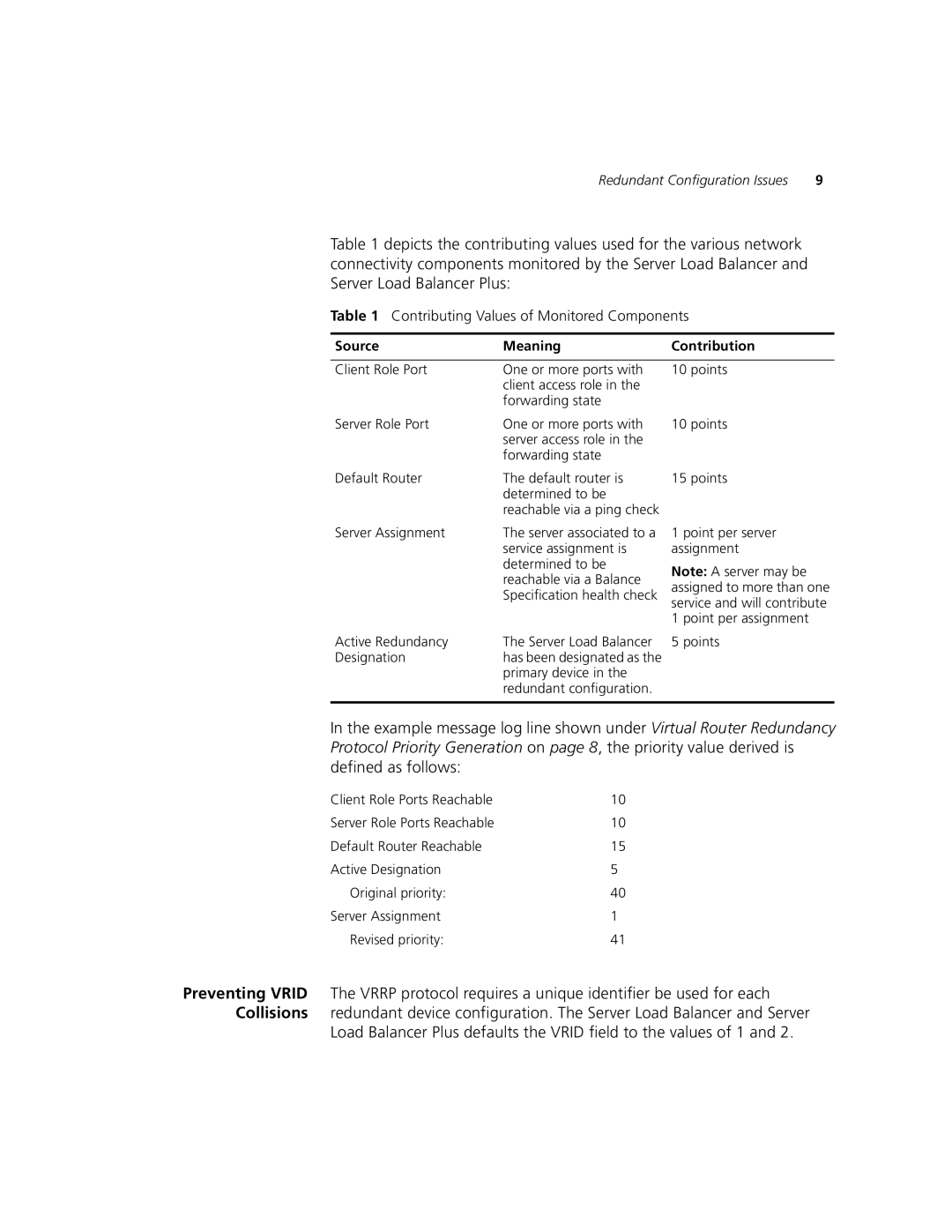Redundant Configuration Issues | 9 |
Table 1 depicts the contributing values used for the various network connectivity components monitored by the Server Load Balancer and Server Load Balancer Plus:
Table 1 Contributing Values of Monitored Components
Source | Meaning | Contribution |
|
|
|
Client Role Port | One or more ports with | 10 points |
| client access role in the |
|
| forwarding state |
|
Server Role Port | One or more ports with | 10 points |
| server access role in the |
|
| forwarding state |
|
Default Router | The default router is | 15 points |
| determined to be |
|
| reachable via a ping check |
|
Server Assignment | The server associated to a |
| service assignment is |
| determined to be |
| reachable via a Balance |
| Specification health check |
1 point per server assignment
Note: A server may be assigned to more than one service and will contribute 1 point per assignment
Active Redundancy | The Server Load Balancer 5 points |
Designation | has been designated as the |
| primary device in the |
| redundant configuration. |
|
|
In the example message log line shown under Virtual Router Redundancy Protocol Priority Generation on page 8, the priority value derived is defined as follows:
Client Role Ports Reachable | 10 |
Server Role Ports Reachable | 10 |
Default Router Reachable | 15 |
Active Designation | 5 |
Original priority: | 40 |
Server Assignment | 1 |
Revised priority: | 41 |
Preventing VRID The VRRP protocol requires a unique identifier be used for each Collisions redundant device configuration. The Server Load Balancer and Server
Load Balancer Plus defaults the VRID field to the values of 1 and 2.
